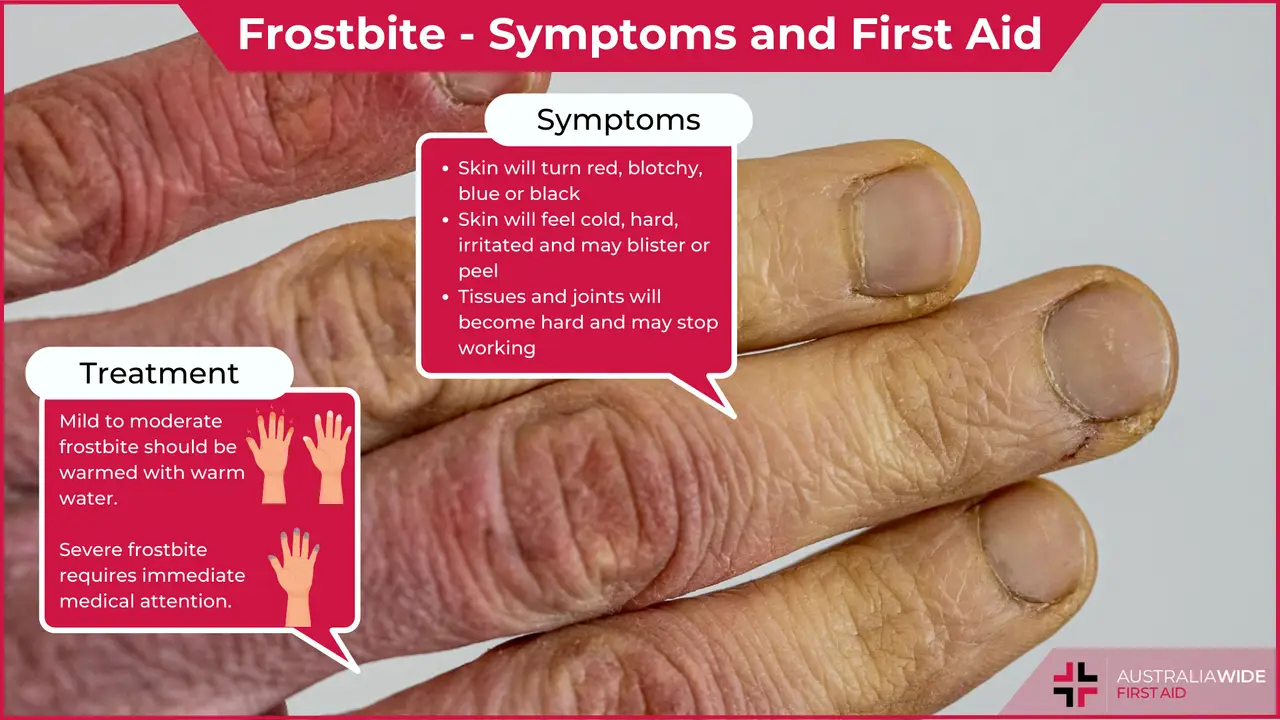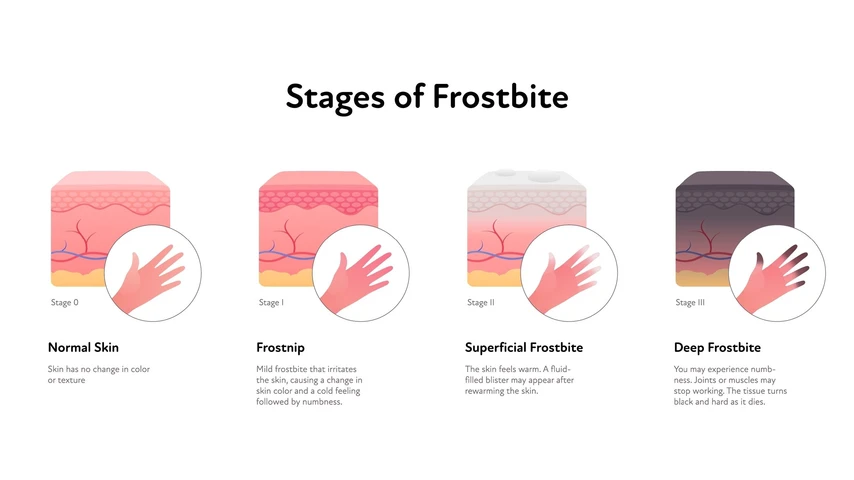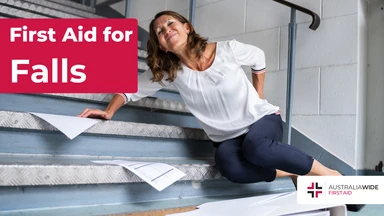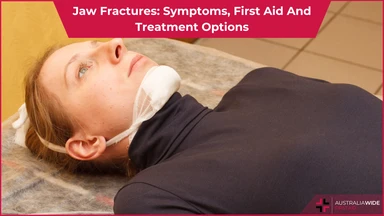Frostbite - How to Recognise the Symptoms and When to Seek Help


Frostbite describes the condition where the skin, and tissues underneath the skin, freeze. It can occur during prolonged exposure to temperatures at or below 0 degrees Celsius. Most Australians believe that frostbite is uncommon here. It is important to recognise the signs and symptoms, as it can occur within minutes in extreme cold.
Knowing how to treat frostbite and when to seek medical attention can mean the difference between keeping limbs and amputation.
There are a range of circumstances that can increase your risk of frostbite. These include:

The most affected areas are the extremities, including the fingers, toes, chin, cheeks, and nose.
The initial stages of frostbite can go unnoticed, often without pain. As the condition progresses, you can experience:
Clumsiness may be increased, especially if the person is unaware of their condition.
In severe cases, the tissue below the skin freezes which can cause joints and muscles to stop working.
If left untreated, the skin and tissues will turn black and die.
Hypothermia is also a risk, if the person does not get warm.
It is important to note that frostbite should be seen to by a medical professional.
In mild cases, it is possible to treat yourself. However, medical advice should still be sought for assessment.
If it is a mild case of frostbite, treatment can include putting the affected area into warm water for 15-30 minutes. The water should be no more that 42 degrees Celsius, and should feel only slightly warm to the touch.
The person with frostbite will feel pain as the area warms. Taking painkillers can help relieve the discomfort.
Avoid using direct heat sources such as hot water or heat packs, and do not massage the area. These treatments can inadvertently cause more damage to the area.
If a mild frostbite site develops blisters during treatment, seek medical attention.
Ensure that the person is kept warm throughout the rest of their body while receiving treatment. Remove any wet clothing, and stay out of wind if possible.
Frostbite cases that are moderate to severe require medical attention. Treatment should not be done at home. It is important to seek help from a medical professional as soon as possible.
Treatment in these cases can include slow warming of the site, sterile dressings, limb elevation, and splints or braces. Doctors will prescribe appropriate pain killers during and after treatment.
If you are admitted to hospital, you will likely be treated in a burns unit. The injuries caused by frostbite are like burns, and recover can be a long process.
In extreme cases, tissues and skin may have died. Treatment may include the removal of any tissue that has been damaged, infected, or died. This can include surgery and amputation of the affected site. Antibiotics are often prescribed to reduce the risk of infection.
In Australia, the risk of frostbite is usually low. However, it is important to be aware of the factors that could make you more vulnerable. These include:
Knowing how to recognise and treat mild frostbite could be the difference between a full recovery and permanent damage.
Keeping your First Aid knowledge up to date ensures you are always prepared to assist those in need.
Check out the video below for more information on how to provide first aid for Frostbite:
You can download a free printable copy of our First Aid for Frostbite Chart.
And for our full suite of downloadable resources, head to our First Aid Chart library.

March 6, 2025
Falls are one of the most common causes of injury, particularly among children and older adults. Whether it’s a simple trip or a serious fall from height, knowing how to administer first aid can prevent further injury and, in some cases, save a life.

October 1, 2024
The musculoskeletal system is the foundation of human movement, support, and protection, playing a critical role in our ability to perform everyday tasks. Understanding the components and functions of the musculoskeletal system is essential for preventing injuries and managing conditions that may arise, particularly in workplaces where manual handling tasks are common.

August 28, 2024
A jaw fracture is a break or crack in the jawbone. This type of injury can occur due to various reasons and may result in considerable pain and difficulty in performing everyday activities like eating and speaking.